Service Alert
July 1 - Canada Day
CELA will be closed on Tuesday, July 1st for Canada Day. Our office will reopen and our Contact Centre services will resume on Wednesday, July 2nd. Enjoy your holiday!
CELA will be closed on Tuesday, July 1st for Canada Day. Our office will reopen and our Contact Centre services will resume on Wednesday, July 2nd. Enjoy your holiday!
Showing 1 - 12 of 12 items

By Sydelle Kramer. 2005
Young readers are in for the most exciting trip of their lives as they venture into a nuclear submarine! While…
touring the vessel from bow to stern, they learn about the history and mechanics of subs, their military and scientific uses, and the incredible discomfort and danger of life onboard. For grades 2-4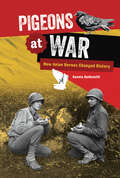
By Connie Goldsmith. 2024
For more than five thousand years, people all over the world have worked with pigeons to send and receive important…
messages. These birds carried weather reports in ancient Egypt, letters between Mongolian warriors in the 1200s, news in nineteenth-century Europe, and more. Homing pigeons became especially important during World Wars I and II. From famous pigeons such as Cher Ami and GI Joe to lesser-known birds such as No. 48, these avian heroes were crucial to war communications. They carried messages between officers and soldiers when phone, radio, or telegraph lines were cut or officers needed to send top secret communications, transporting vital information across great distances. Homing pigeons, like human heroes, received awards and medals for their service. In fact, pigeons earned the most medals of any animal for their services during these conflicts. Discover how pigeons were domesticated and trained for use in military conflicts, learn about some of their most daring flights, and explore how pigeons and humans continue to work together. For junior and senior high readers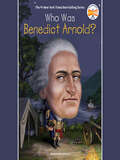
By James Buckley. 2020
Find out how this one-time American hero became the country's most notorious traitor. As a young child, Benedict Arnold never…
shied away from a fight. So when the French and Indian War began in 1754, Benedict was eager to join the militia and fight for the British colonies in America. And when he was eighteen years old, he got his chance. Arnold had no idea that less than twenty years later, he would be fighting against the British in the Revolutionary War. Now the captain of his own militia, Benedict won the admiration of his troops and George Washington when he captured a major British fort. He continued fighting for the colonies and was even considered a patriotic war hero after being wounded in battle. But in 1780, Benedict made a decision that no one could anticipate. He betrayed his fellow Americans and joined the British army. Author James Buckley Jr. takes us through Benedict's life and explains the events that led him to switch sides and become the most famous turncoat in American history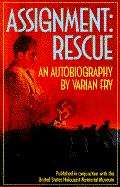
By Varian Fry. 1945
Marseilles, France....August, 1940 The Gestapo's blacklist was thousands of names long... How many people could he get out before Hitler…
sealed the frontiers? Varian Fry didn't know any more about being an undercover agent than what he'd seen in the movies. But, he was the one man who could get into Vichy France, where thousands of people had fled Hitler's Germany. Unless he could get them out, they'd be trapped-turned back to the concentration camps and death camps. An exciting, true story of World War II - Varian Fry describes the methods he used to get thousands of hunted men and women to safety. Adult. Unrated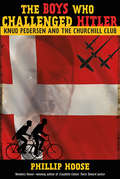
By Phillip M Hoose. 2015
"At the outset of World War II, Denmark did not resist German occupation. Deeply ashamed of his nation's leaders, fifteen-year-old…
Knud Pedersen resolved with his brother and a handful of schoolmates to take action against the Nazis if the adults would not. Naming their secret club after the fiery British leader, the young patriots in the Churchill Club committed countless acts of sabotage, infuriating the Germans, who eventually had the boys tracked down and arrested. But their efforts were not in vain: the boys' exploits and eventual imprisonment helped spark a full-blown Danish resistance. Interweaving his own narrative with the recollections of Knud himself, here is Phil Hoose's inspiring story of these young war heroes"-- Provided by publisher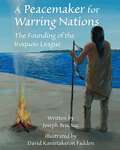
By Joseph Bruchac. 2021
The League of the Iroquois was a true representational democracy—so much so that the United States Constitution is said to…
have been modeled on some of its tenets. But how, perhaps a thousand years before the time of Columbus, did the Five Iroquois Nations (the Mohawk, Onondaga, Oneida, Cayuga, and Seneca) come to end the bitter eye-for-eye warfare among them? What brought them together in an alliance based on the Great Law of Peace? And how was it that a system of Clan Mothers was instituted in which women are seen as the center of the nation and still today choose the 50 royaners, or peace chiefs, who speak for their respective communities in meetings of the League? In A Peacemaker for Warring Nations, renowned Native author Joseph Bruchac draws from the teachings of both contemporary and past Iroquois tradition bearersin telling the inspiring story of how &“the Peacemaker,&” a divine messenger sent by the Creator, helped to bring reconciliation to warring nations. The book is beautifully and accurately illustrated by David Kanietakeron Fadden, a respected Mohawk artist whose work honors his deep indigenous roots.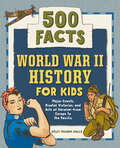
By Kelly Milner Halls. 2021
Incredible World War II facts for curious kids ages 8 to 12Kids don't need long, boring textbooks to learn about…
history! Starting with the events that set the stage for war and finishing with its aftermath, World War II History for Kids helps them explore the past through interesting and memorable facts they can share with their friends and family.Go beyond other World War 2 books for kids with:500 facts—This book teaches kids all about the heroism and horrors of World War II, one informative tidbit at a time.The complete timeline—Kids will learn all about important people, places, and events from before, during, and after the war.A leg-up on learning—These facts provide kids with a head start on the topics they'll be covering in class, plus things they might not learn in school.Help young learners better understand what happened during WWII with this engaging, fact-driven history book.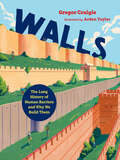
By Gregor Craigie. 2024
Building walls that separate us from others is as old as humanity. People have built walls to keep others out…
for thousands of years, from the Great Wall of China to Hadrian's Wall to security fences along the US-Mexico border. But did you know they've also been built to keep people in, to grow food, to control nature and to collect taxes? Sometimes they've helped people and kept communities safe, but they've also created inequity and done more harm than good. Why do we have walls at all? Walls: the Long History of Human Barriers and Why We Build Them explores the many reasons humanity has put up walls over the course of our history, and why we continue building them today
By Chana Stiefel. 2022
"The story begins with Yaffa Eliach, a spirited young girl who grows up in a vibrant, happy 800-year-old town in…
Poland, filled with family life and rich traditions. Yaffa's grandmother, who receives a gift of a camera from America, becomes the village photographer, and takes photos of all the family events: weddings, bar mitzvahs, and family gatherings. And on the Jewish New Year, the villagers send photos to their relatives overseas to wish them a "Gut Yontif"! But one dark day, the town is invaded. And quickly the once happy home to 5,000 Jewish people is uprooted. Yaffa survives the war and becomes a Professor of History and America's foremost Holocaust expert. And when President Jimmy Carter invites her to create an exhibit for the new National Holocaust Museum in Washington, DC, she travels around the world hunting down her grandmother's photos taken of people who fled from her beloved town, Eishyshok, along with their stories and memories. This breathtaking revival of the town's collective spirit, which is a permanent exhibit at The National Holocaust Museum in Washington DC, will inspire all who read it." -- Provided by publisher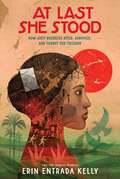
By Erin Entrada Kelly. 2025
"A courageous, uplifting biography of a woman almost lost to history.” –ALA Booklist World War II spy, Filipino guerrilla fighter, war…
hero, Medal of Freedom recipient, leprosy survivor, teacher, peacemaker . . . The legendary and inspiring life and work of Josefina “Joey” Guerrero is introduced to readers by two-time Newbery Medal winner, National Book Award finalist, and bestselling author Erin Entrada Kelly. For fans of Steve Sheinkin and Candace Fleming.Joey Guerrero, a native of the Philippines, was diagnosed with leprosy (Hansen’s disease) as World War II unfolded in Europe and Asia. Soon after the Japanese occupied the Philippines, Joey—believing she would die soon—joined the guerrilla movement to complete covert missions in support of the Allies. Because of her condition, she was rarely searched by Japanese soldiers, which allowed her to courier secret messages, including an invaluable minefield map that she taped to her back. She was eventually awarded the US Presidential Medal of Freedom and admitted to the National Leprosarium in Carville, Louisiana, where she lived for nine years. When she was cured and released, she found it difficult to find work because of racial discrimination and her health history and was forced to pawn her Presidential Medal to make ends meet. Eventually, she shed her previous identity. When she died in 1996, her obituary identified her as a secretary from Manila. But Joey Guerrero was much more than that—she was a hero who changed the course of history.Erin Entrada Kelly’s engaging nonfiction debut combines themes of the Philippines, World War II, the Asia-Pacific War, spy stories, Louisiana, immigration, disease and medicine, racism, perseverance, religious devotion, and hope. Illustrated with photographs, maps, and other illustrative material and featuring sidebars that clearly illuminate key moments in history, At Last She Stood is for readers and educators who love Candace Fleming, Deborah Heiligman, Christina Soontornvat, and Steve Sheinkin. Includes an author’s note, source notes, index, and other back matter.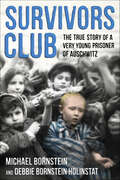
By Michael Bornstein, Debbie Bornstein Holinstat. 2017
A New York Times bestseller“Both moving and memorable, combining the emotional resolve of a memoir with the rhythm of a…
novel.” —New York Times Book ReviewIn 1945, in a now-famous piece of World War II archival footage, four-year-old Michael Bornstein was filmed by Soviet soldiers as he was carried out of Auschwitz in his grandmother’s arms. Survivors Club tells the unforgettable story of how a father’s courageous wit, a mother’s fierce love, and one perfectly timed illness saved his life, and how others in his family from Zarki, Poland, dodged death at the hands of the Nazis time and again with incredible deftness. Working from his own recollections as well as extensive interviews with relatives and survivors who knew the family, Michael relates his inspirational Holocaust survival story with the help of his daughter, Debbie Bornstein Holinstat. Shocking, heartbreaking, and ultimately uplifting, this narrative nonfiction offers an indelible depiction of what happened to one Polish village in the wake of the German invasion in 1939.This thoroughly-researched and documented book can be worked into multiple aspects of the common core curriculum.A New York City Public Library Notable Best Book for Teens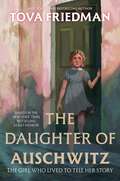
By Tova Friedman. 2025
In this powerful middle grade adaptation of the bestselling adult memoir of the same name, New York Times bestselling author…
Tova Friedman recounts her experiences as one of the youngest survivors of the Holocaust.At the tender age of five years old, Tola Grossman was sent to a Nazi labor camp. As World War II was breaking out around them, the only thing Tola and her parents were left with was the instinct to survive at all costs. Tola’s life became a series of miraculous close calls, from being saved from a gas chamber to successfully hiding from the Nazis as they were rounding people up. In this evocative account of one young girl’s survival, Tova Friedman chronicles the atrocities she witnessed while at Auschwitz and, ultimately, the sources of hope and courage she and her family found to persist against all odds.